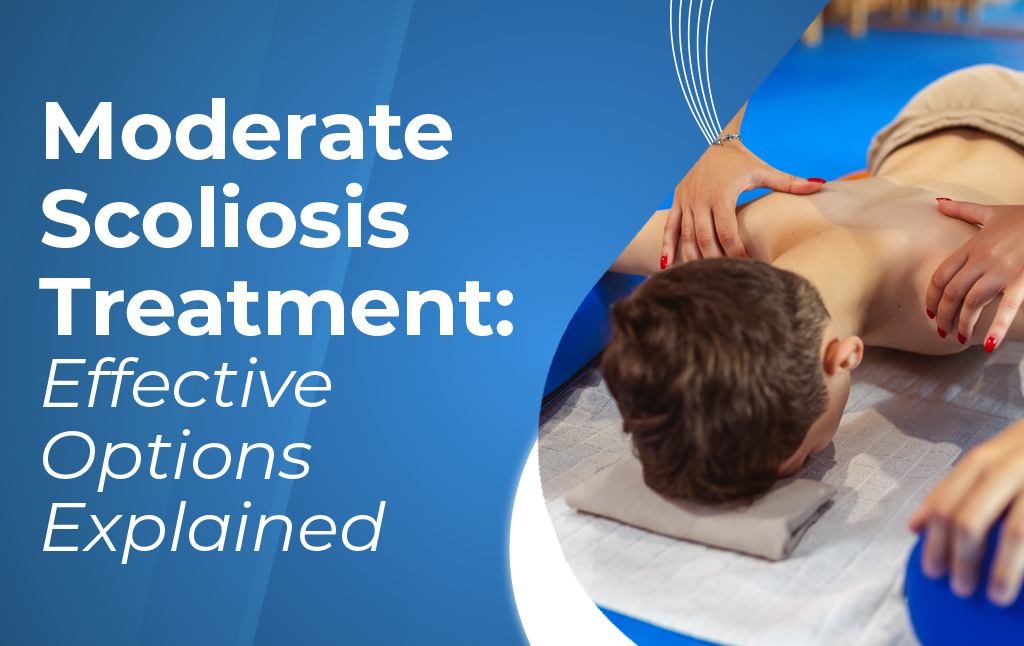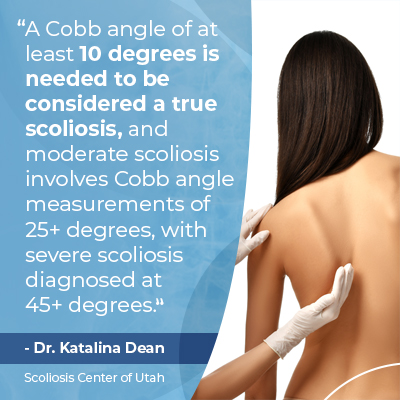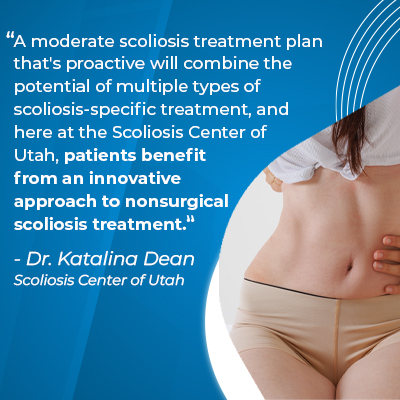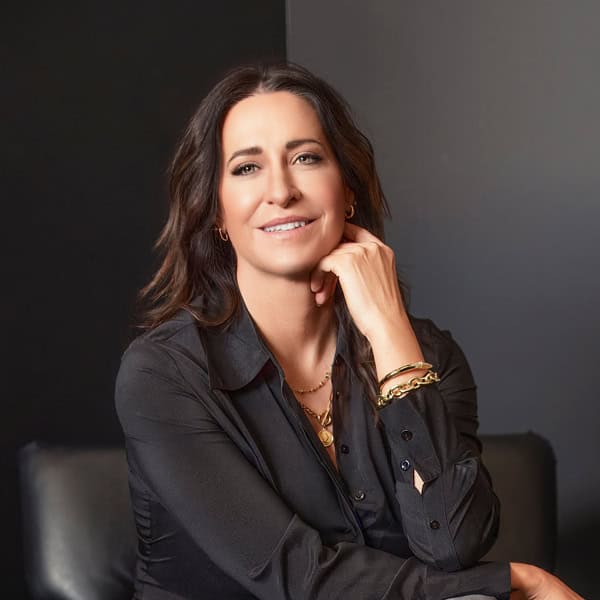Blogs
Moderate Scoliosis Treatment: Effective Options Explained

The best way to prevent moderate scoliosis from becoming severe scoliosis is to treat it proactively. Scoliosis is progressive, but it can be highly treatable. Regardless of severity, it’s never too late to start treatment, and while there are no treatment guarantees, there are a number of benefits associated with early detection and a proactive treatment response.
Scoliosis can range widely in severity from mild scoliosis to moderate and severe scoliosis. Scoliosis is progressive, so its severity can change quickly. The signs of mild scoliosis can be subtle, which is why patients are commonly diagnosed with moderate scoliosis.
A patient’s Cobb angle measurement classifies scoliosis as mild, moderate, or severe, so let’s start with how the measurement is reached.
Determining Scoliosis Severity
When scoliosis is diagnosed, an unnatural sideways spinal curvature has developed, and as the spine also rotates, scoliosis is a 3-dimensional spinal condition.
As a progressive condition, the nature of scoliosis is to become more severe, and progression is triggered by growth.
A comprehensive assessment is needed to diagnose scoliosis, and the results of a patient’s initial assessment and scoliosis X-ray will shape the customization of a patient’s treatment plan.
An X-ray is needed to diagnose scoliosis; the spine’s rotational component has to be confirmed and the size of the scoliosis needs to be determined.
A number of measurements are taken in a patient’s initial X-ray, and the Cobb angle measurement is what determines whether a patient’s scoliosis is mild, moderate, or severe.
Cobb angle is determined by the curve’s most-tilted vertebrae, is expressed in degrees, and needs to be measured accurately as it’s referred to throughout the course of treatment to gauge response and treatment efficacy.
 A Cobb angle of at least 10 degrees is needed to be considered a true scoliosis, and moderate scoliosis involves Cobb angle measurements of 25+ degrees, with severe scoliosis commonly diagnosed at 45+ degrees.
A Cobb angle of at least 10 degrees is needed to be considered a true scoliosis, and moderate scoliosis involves Cobb angle measurements of 25+ degrees, with severe scoliosis commonly diagnosed at 45+ degrees.
While a patient’s Cobb angle is a prime indicator of severity, there are also additional factors that shape the severity and potential effects of a patient’s scoliosis like patient age, the amount of rotation, and curvature location.
With progressive conditions like scoliosis, the timing of treatment can be important, and recognizing the early signs of scoliosis is key.
Early Signs of Scoliosis
The signs of mild scoliosis can be subtle, particularly in children. Childhood scoliosis isn’t commonly associated with back and radiating pain; scoliosis becomes compressive once growth has stopped.
While pain is the main symptom of adult scoliosis, postural changes are the earliest signs in children, and progression triggered by growth spurts can make the changes more overt.
The most common signs of scoliosis in children involve the development of asymmetrical posture, the earliest changes are often uneven shoulders and uneven hips.
As progression occurs, postural changes can become more overt, which is why most cases of scoliosis are diagnosed while moderate; the signs of mild scoliosis are often missed.
Diagnosing scoliosis while mild means early detection has been achieved, and this means the opportunity to start treatment while scoliosis is mild is within reach.
Addressing scoliosis while mild means while the curve is small and flexible, and most likely to respond well to treatment; scoliosis is progressive, but it can be highly treatable.
If the early signs of mild scoliosis are missed, it can become moderate or severe scoliosis.
The signs of moderate scoliosis include uneven shoulders, hips, a rib cage arch, arm and leg length discrepancies, and disruptions to healthy movement patterns are also common.
Moderate scoliosis can progress and become severe without the help of a proactive treatment plan, and scoliosis treatment options can be surgical or nonsurgical.
The terms mild and moderate can be misleading; they can suggest a lack of urgency, but this isn’t the case because growth and/or spinal degeneration in older adults can cause rapid scoliosis advancement.
The more progression occurs, the more disruptive the condition’s effects may be, and the more challenging it can be to improve and/or reverse those effects.
Moderate Scoliosis Treatment
Regardless of how severe a patient’s scoliosis is at the time of diagnosis, treatment can be beneficial, and particularly when it comes to young patients who are still growing, treatment needs to be proactive and managed effectively during periods of rapid growth.
A diagnosis of moderate scoliosis doesn’t guarantee it will become severe, but it is likely to if left untreated and valuable treatment time is wasted.
Moderate scoliosis patients have Cobb angle measurements of between 25 and 45 degrees, and the goal of treatment is to prevent moderate scoliosis from becoming severe, to restore balance and stability to the spine and body, and avoid the need for invasive scoliosis surgery.
 A moderate scoliosis treatment plan that’s proactive will combine the potential of multiple types of scoliosis-specific treatment, and here at the Scoliosis Center of Utah, patients benefit from an innovative approach to nonsurgical scoliosis treatment.
A moderate scoliosis treatment plan that’s proactive will combine the potential of multiple types of scoliosis-specific treatment, and here at the Scoliosis Center of Utah, patients benefit from an innovative approach to nonsurgical scoliosis treatment.
Successful treatment for scoliosis means improving the spine’s alignment and position, which will not only improve the balance and stability of the spine, but the entire body.
Moderate scoliosis treatment that’s proactive can work towards preventing progression and increasing effects.
Here at the Center, a number of scoliosis-specific treatments are applied, including a powerful modality only offered by one percent of the world’s chiropractors: Chiropractic BioPhysics.
Chiropractic BioPhysics
Scoliosis is a structural issue, so effective treatment has to impact it on a structural level, and this is where a series of chiropractic techniques and manual adjustments can work towards improving the spine’s structural position.
Chiropractic BioPhysics is an all-encompassing modality that identifies the underlying cause of pain and mobility issues by working towards restoring the spine and body’s healthy alignment, curves, and posture.
Chiropractic BioPhysics is integrative, as is conservative treatment in general, and works with the power of scoliosis-specific exercise.
ScoliBalance
ScoliBalance is a complete scoliosis-specific exercise program that harnesses the power of exercise to increase spinal flexibility, making it more responsive, improving the strength and balance of the spine’s surrounding muscles for more support, reducing curve size, slowing/stopping progression, and postural restoration and awareness.
ScoliBalance uses Mirror Image exercise to teach patients how they should be positioning their spines and bodies to counteract the scoliosis and sustain corrections achieved through treatment.
ScoliBalance and CBP can achieve corrective results in many cases, and when combined with the potential of corrective bracing, the scope of nonsurgical treatment increases.
ScoliBrace
ScoliBrace is an advanced and modern corrective scoliosis brace that’s often prescribed for full time wear.
The ScoliBrace places the spine in an overcorrective position and uses spinal coupling to alter the spine’s position.
Unlike many traditional scoliosis braces based on spinal immobilization and a 3-point-pressure system, the ScoliBrace is designed to facilitate movement and complements the ScoliBalance program.
Conclusion
The goal of moderate scoliosis treatment is to prevent it from becoming severe scoliosis.
When the spine curves and rotates unnaturally, it’s not just going to affect the spine, but the entire body.
Spinal health supports healthy movement patterns, posture, strength, and flexibility. As the spine protects the spinal cord within, the spine’s health also affects brain-body communication.
Regardless of severity level, the best time to start proactively addressing scoliosis is always now; as a progressive condition that’s triggered by growth, mild scoliosis can quickly become moderate and/or severe scoliosis.
The signs of moderate scoliosis are easier to recognize than in milder cases, so the majority of scoliosis patients are diagnosed after mild curves have progressed into the moderate classification and cause more-noticeable effects.
There are never treatment guarantees, but moderate scoliosis that’s treated proactively can be highly responsive, and securing the best possible treatment outcome for the patient is always the goal.
Through a comprehensive initial assessment and scoliosis X-ray, treatment plans are customized around important variables, and as conservative treatment is multi-faceted, the potential of Chiropractic BioPhysics, the ScoliBalance program, and corrective bracing work together to impact the spine’s structure, surrounding muscle balance/strength, and body posture.
Spinal health and posture are linked, so improving one can impact the health of the other, and a spine that’s straight and aligned is one that can support healthy posture and movement patterns.

Dr. Katalina Dean
Dr. Katalina Dean is the founder and clinical director of Scoliosis Center of Utah, in Midvale, UT. Her team specializes in posture correction, spinal rehabilitation, and non-invasive scoliosis care and bracing.
Call Today
Do You Qualify for Care?
Schedule an Appointment Below
